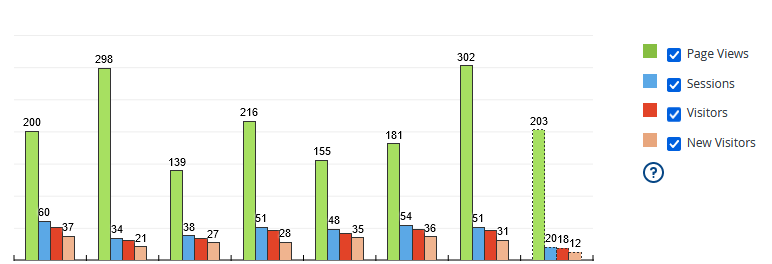TELAAH HISTORIS TERHADAP TEORI EVOLUSI CHARLES DARWIN DITINJAU DARI REVOLUSI SAINS THOMAS S. KUHN
Abstract
Abstract: This article specifically describes how a scientific theory is formed and placed as an epistemic truth, even in the end it becomes a paradigm that influences scientific methodologies in various different scientific fields. This is in line with the scientific revolution proposed by Thomas S. Kuhn. The discussion in this article will focus on the development of the theory of evolution proposed by Charles Darwin in the field of biology, viewed from the perspective of the scientific revolution of Thomas S. Kuhn. This effort was made because in its development, Darwin's theory of evolution has historically been the starting point for theoretical revolutions in the field of biology, and even in other scientific fields. This historical explanation of how the development process of Darwin's theory of evolution shifted, and even undermined previous scientific theories, became a starting point for a radical theoretical transformation in the development of science which was viewed from Kuhn's analysis through his theoretical schema of the revolution of a scientific theory. This becomes very important for researchers and the general public, especially to provide an explanation that the epistemic truth in science is not a sudden speculative knowledge, as is the ontological truth in religious knowledge and cultural knowledge. The methodical approach used in this article will use a historical continuity approach, heuristics, and interpretation. The type of analysis in this article falls into the analysis of scientific theory. This article was written with the aim of providing a description, evidence, and argument that the paradigm shift of science from the pre-Darwinian evolutionary period to the Darwinian evolutionary period is a description of a radical theoretical transformation process that occurs instantly in a scientific field, which in Kuhn's thinking is passed through The main phases are normal science, anomaly, crisis, and scientific revolution.
Keywords: The Theory of Evolution, Scientific Revolution, Charles Darwin, Thomas S. Kuhn, Epistemic Truth
Full Text:
PDFReferences
Blackburn, Simon. Kamus Filsafat: Buku Acuan Paling Terpercaya di Dunia. Ed. Yudi Santoso. Bahasa Ind. Yogyakarta: Pustaka Pelajar, 2013.
Boylan, Michael. “Aristotle: Biology.” Internet Encyclopedia of Philosophy, 2005. Online. Internet. 8 Jun. 2022. . Available: https://iep.utm.edu/aristotle-biology/.
Carroll, William E. “Creation, Evolution, and Thomas Aquinas.” Catholic Education Resource Center, 2000. Online. Internet. 8 Jun. 2022. . Available: https://www.catholiceducation.org/en/science/faith-and-science/creation-evolution-and-thomas-aquinas.html.
Chalmers, A.F. Apa itu yang Dinamakan Ilmu? Ed. Joesoef Isak. Bahasa Ind. Jakarta: Hasta Mitra, 1982.
Cicero, Marcus Tullius. De Natura Deorum. Ed. Harvard University. Copy. Massachusetts: Harvard University Press, 1933.
Ferngren, Gary B, Edward J Larson, and Darrel W Amundsen. The History of Science and Religion in the Western Tradition: An Encyclopedia. New York: Routledge, 2000.
Hall, Calvin S. Naluri Kekuasaan Sigmund Freud. Yogyakarta: Narasi, 2017.
Helmi. “Evolusi antar Spesies (Leluhur Sama dalam Perspektif para Penentang).” Jurnal Ilmiah Multi Sciences Vol IX.Ilmu Kealaman (2017): 83–93. Available: https://journal.unha.ac.id/index.php/JTI/article/view/100/67.
Irvine, Chris. “The Vatican claims Darwin’s Theory of Evolution is Compatible with Christianity.” The Telegraph, 2009. Online. Internet. 8 Jun. 2022. . Available: https://www.telegraph.co.uk/news/religion/4588289/The-Vatican-claims-Darwins-theory-of-evolution-is-compatible-with-Christianity.html.
Krebs, Robert E. Groundbreaking Scientific Experiments, Inventions, and Discoveries of The Middle Ages and the Renaissance. London: Greenwood Press, 2004.
Kuhn, Thomas S. The Structure of Scientific Revolutions. Ed. Tjun Surjaman. Bahasa Ind. Bandung: Remaja Rosdakarya, 2012.
Layton, Richard A. Didymus the Blind and His Circle in Late-Antique Alexandria: Virtue and Narrative in Biblical Scholarship. Chicago: University of Illinois Press, 2004.
Mayr, Ernst. The Growth of Biological Thought: Diversity, Evolution, and Inheritance. Massachusetts: Belknap Press of Harvard University Press, 1982.
Trisakti, Sonjoruri B. “Thomas Kuhn dan Tradisi-Inovasi dalam Langkah Metodologis Riset Ilmiah.” Jurnal Filsafat Vol 18.Philosophy (2008): 223–239.
Wilkins, John. “Species, Kinds, and Evolution.” National Center for Science Education Vol. 26.Biology (2006): 36–45. Available: https://ncse.ngo/species-kinds-and-evolution.
DOI: http://dx.doi.org/10.31385/jl.v21i2.292.219-231
Refbacks
- There are currently no refbacks.

This work is licensed under a Creative Commons Attribution-NonCommercial-ShareAlike 4.0 International License.

Copyright© 2015 JURNAL LEDALERO This work is licensed under a Creative Commons Attribution-NonCommercial-ShareAlike 4.0 International License.
Institut Filsafat dan Teknologi Kreatif Ledalero Jalan Trans Maumere-Ende - Sikka - Flores - Nusa Tenggara Timur - Indonesia Telp/Fax: 0382 2426535










